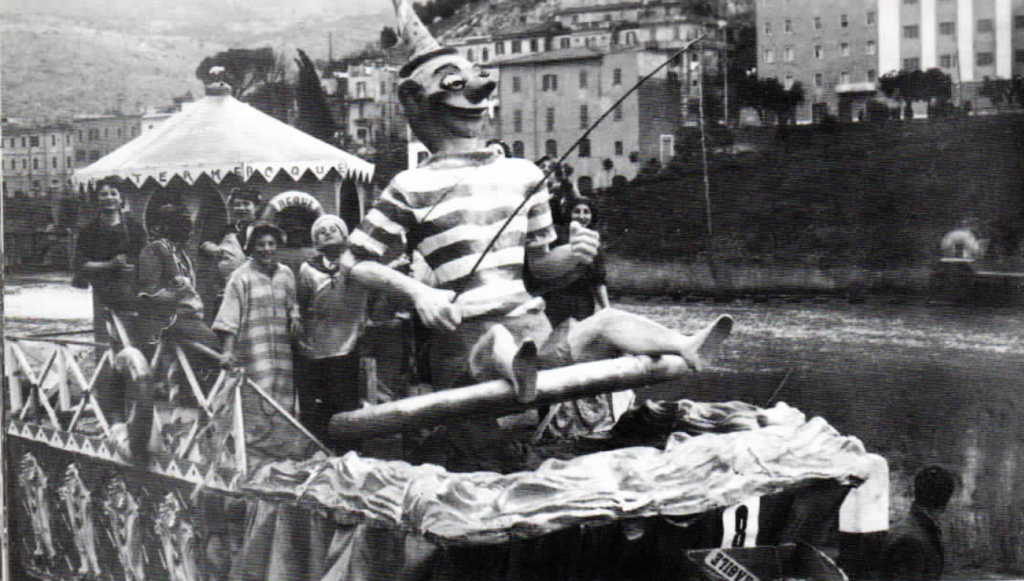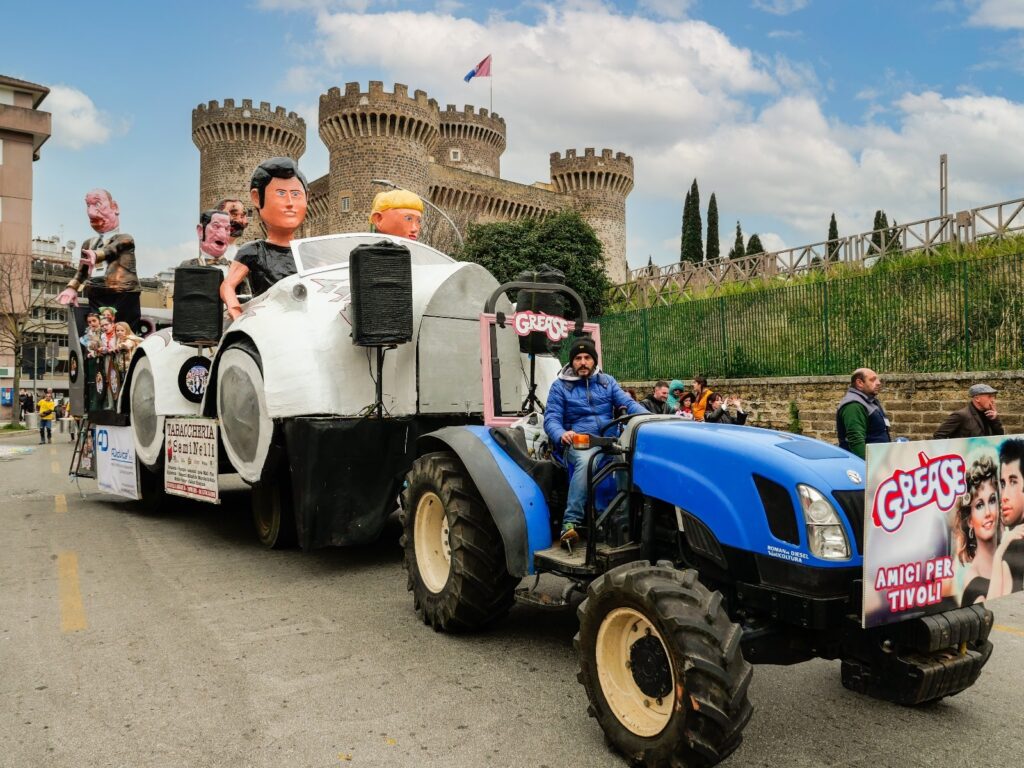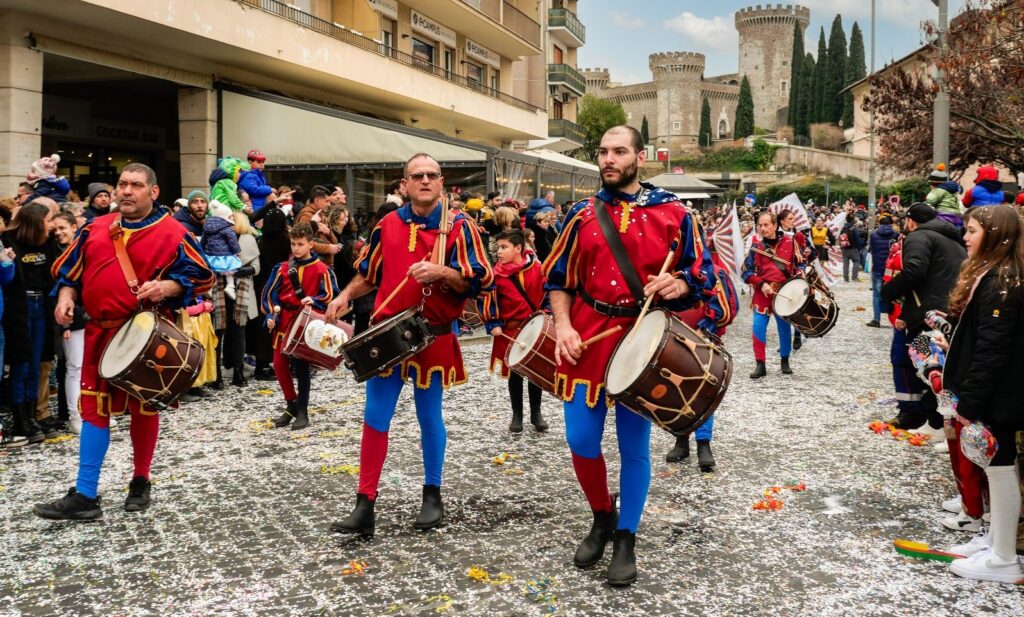The ancient Carnival of Tivoli, celebrated for the first time at the end of the sixteenth century with songs and dances, was established by Cardinal Ippolito d’Este. By the introduction of this joyous event, he broke the monotony of this small town of priests and farmers and invited the noble families to participate.
In the aftermath of the Italian unification, a parade of majestic allegorical floats carrying papier-mâché characters were also introduced.

The traditional parade of allegorical floats during the Carnival of Tivoli
The Carnival celebrations in Tivoli traditionally start on January 17, the Day of Sant’Antonio Abate, with the cheerful music of folk instruments, such as the tamburelli or the Neapolitan Caccavelle and Triccheballacche, accompanying the dances with their rhythm until late at night.
Over the years, the Historic Carnival of Tivoli has undergone less glorious times, until it was interrupted during the World War years. At the end of the ‘70s it was newly established thanks to the “Comitato centrale per i festeggiamenti tiburtini”. Today, during the so-called Tiburtino Historic Carnival, several multicoloured papier-mâché figures, created by the skilled hands of local artisans, parade throughout the town’s streets. Since the first post-war editions, hundreds of people have been attending the event, so much that a competition for the best float among the four districts of Castrovetere, Duomo, Santa Croce and San Giovanni is now held each year. In 2025, the Italian Ministry of Culture recognized the event as “Carnevale storico d’Italia”.

The parade of the allegorical floats at the Historic Carnival of Tivoli.
The 2025 Edition of the Carnival, a mix of tradition and innovation based on fun and creativity, offers a very rich calendar of events, included the most awaited Parade of the Allegorical Floats, whose themes vary each year.

The street band at the Tivoli Historic Carnival
Also noteworthy are the acting shows in Tiburtine dialect at the Scuderie Estensi, the children competition for the best mask at the Giuseppetti Theatre and the performances of the majorettes, the flag-wavers and the street bands. As usual, the celebrations end on Shrove Tuesday with the burning of the Carnival King.
Many interesting initiatives are also organized in Villa Adriana, Campolimpido, Tivoli Terme and Bivio di San Polo.
